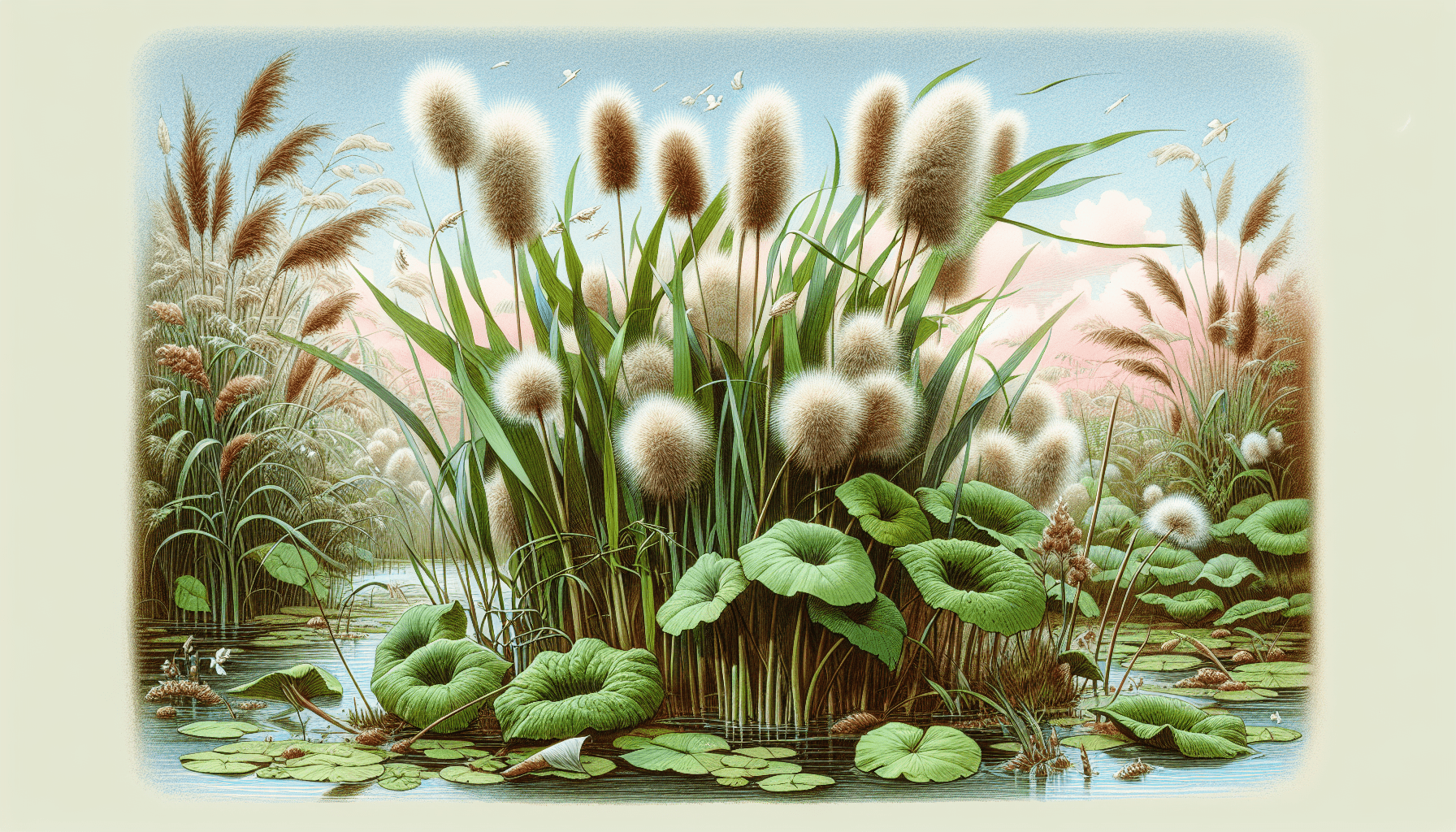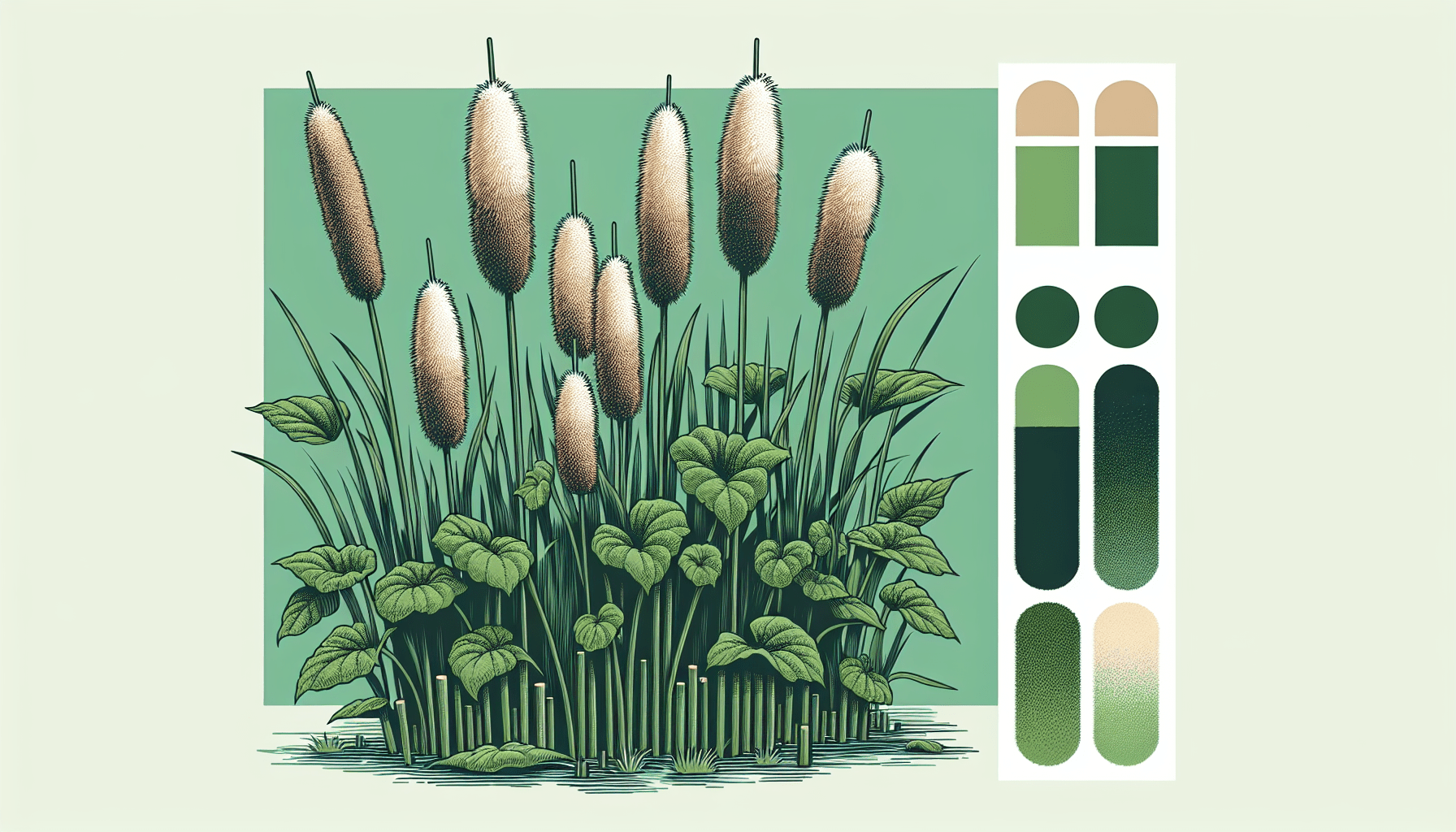In the vast world of aquatic flora, your understanding may be drawn towards one striking species, the Typha Incana. This article aims to elucidate the nature and characteristics of this specific aquatic weed. Known commonly as the Lesser Bulrush or Smallreed, Typha Incana has unique properties that set it apart in the aquatic realm, and will no doubt pique your intellectual curiosity. With a blend of botanical insight and ecological perspective, you are invited to expand your knowledge of this fascinating hydrophyte.

Defining Typha Incana
The scientific world extends beyond what meets the eye, with numerous species waiting to be studied and understood. One such intriguing specimen is Typha Incana, an aquatic plant primarily found growing in damp, marshy locations.
Species origin and scientific classification
Typha Incana, also known as smaller reedmace or, in North America, lesser bulrush, belongs to the Typhaceae family. The species finds its roots in Europe, North Africa, and Western Asia. It holds a significant place in the biological kingdom with distinct features that set it apart from its brethren.
Common names and synonyms
Besides its scientific denomination, Typha Incana is commonly referred to as White Cattail, Narrow-Leaved Cattail, or Blue Cattail. These names mirror the plant’s unique appearance and help non-experts identify this species easily.
Differentiating from other Typha species
Typha Incana shares its family with about 30 other distinct species. However, its slender structure, lesser height, and unmistakable light brown, cigar-shaped flower spikes make it unmistakable from other members of the Typha genus.
Description of Typha Incana
Typha Incana is truly an engrossing species, with an appearance distinctive enough to pique your interest and a life cycle that is equally captivating.
Appearance and size
Typha Incana is an aquatic, perennial herb, marked by a distinct structure that can reach heights of up to 2 meters. It has a rigid, erect stance with long, slender, blue-green leaves. The easily identifiable feature of this species is the light brown, cigar-shaped flower spikes that give it one of its common names – lessor bulrush.
Flower and seed characteristics
The flower of Typha Incana is the highlight of this species, and it usually blooms between June and July. The female flowers appear as a dense, rounded spike at the stem’s end, while the male flowers appear just above them. The flowers later develop into cotton-like fluff with seeds that are wind dispersed.
Habitat and growth patterns
Typha Incana thrives in marshes, fens, and brackish waters where soil has ample moisture. It has a clump-forming growth pattern with robust, fibrous roots that make it a hardy plant able to withstand heavy soil and challenging environmental factors.
Geographic Distribution
Though originally a part of specific geographies, Typha Incana has extended its presence due to its adaptability to various climatic conditions.
Natural range and habitats
The natural habitat of Typha Incana is skewed towards the Northern Hemisphere, mainly Europe & North Africa, and Western Asia. Here, you’ll generally find this species in marshlands, ditches, and places with high soil moisture.
Introduced regions
Over time, Typha Incana has spread worldwide, including parts of North America and Australia. Its rapid and aggressive spread can be seen where excessive nutrients are available from human impact.
Impact on local biodiversity
A significant characteristic of Typha Incana is its robust nature, which allows it to dominate its habitat. This aggressive growth may lead to reduced plant diversity, thus affecting the entire ecosystem’s health.

Ecological Impact
The ecological impact of Typha Incana extends beyond transforming landscapes and highlights its interaction with various ecosystem functions and species.
Effect on water bodies
Typha Incana tends to form dense colonies that consume large quantities of water and tend to alter the water body’s hydrological structure they inhabit.
Influence on fish and bird species
Despite its invasive nature, Typha Incana provides a vital feeding and nesting habitat for certain birds and fish species. Its stalks provide cover and resting space for fish, while its seeds are a food source for several bird species.
Shifts in ecosystem balance
While it can offer benefits for some wildlife, Typha Incana’s rapid growth can lead to a shift in the ecosystem balance. By dominating water bodies, it can reduce sunlight penetration, thus affecting the growth of submerged plants and altering the aquatic ecosystem.
As Invasive Species
Taking into account its rapid and uncontrolled spread, experts often label Typha Incana as an invasive species.
Criteria for invasive status
An invasive species tends to spread, establish, and often dominate in ecosystems outside their native habitats. Typha Incana fits all these criteria, making it a defined invasive species.
Regions defined as invasive
Typha Incana is listed as invasive in some regions of North America, Australia, and New Zealand. This is due to its rapid spread combined with a general lack of natural enemies to keep it in check.
Environmental and economic consequences of invasiveness
The uncontrolled growth of Typha Incana can lead to water bodies stagnation, thereby reducing their usage for recreational activities and impacting local economies. Moreover, these dense colonies can increase the risk of wildfires, causing environmental damage.
Control and Management
Given its invasive status, controling and managing Typha Incana effectively is direly important.
Manual removal methods
Manual removal, involving hand-pulling or cutting, can prove effective for smaller infestations of Typha Incana.
Use of biological control
Biological control, involving the introduction of natural predators or disease, is a long-term and environment-friendly management strategy. However, finding an effective biological control for Typha Incana remains a significant challenge.
Chemical treatments and their implications
While chemical treatments may provide a quick solution, it’s imperative to use them judiciously considering their potential impacts on non-target species and the environment.
Uses of Typha Incana
Despite its invasive status, Typha Incana is not without uses.
In traditional medicine
In some cultures, the parts of Typha Incana have been used to treat various illnesses. This includes using seeds for diarrhea, roots for burns, and the pith for infections.
As a food source
In survival situations, the roots, young shoots, and pollen of Typha Incana can be consumed.
For weaving and manufacturing
Typha Incana’s robust stalks are fibrous and can be used for weaving baskets. Its high cellulose content also makes it a potential candidate for biofuel production.
Scientific Research and Advancements
Typha Incana’s unique characteristics have spurred scientific research and advancements, particularly in its medicinal properties and invasive behavior.
Studies on medicinal properties
Research is ongoing on Typha Incana’s medicinal properties discovered in traditional medicine. These include potential antibacterial, antifungal, and antidiabetic properties.
Research on invasive behavior
Scientists are probing its invasive behavior, looking into its reproductive patterns, spread dynamics, and possible control methods.
Breeding efforts and genetic studies
Efforts are focused on breeding studies to understand genetic manipulation’s potential in controlling population growth and reducing its invasive potential.
Education and Awareness
Raising awareness about Typha Incana, its impacts, and management strategies is as essential as scientific research.
Importance in biology curriculum
Incorporating Typha Incana in biology curriculums could aid in fostering a better understanding of invasive species, their impacts, and ways to control them effectively.
Public awareness campaigns
Public awareness campaigns can help in identifying, reporting, and responsibly managing Typha Incana, particularly in regions where it’s recognized as invasive.
Training for safe and effective removal
Training initiatives can ensure safe and effective removal practices, focusing on minimal damage to non-target species and the environment.
Future Prospects
Looking forward, Typha Incana’s future prospects include harnessing its potential benefits and effectively managing the threats and challenges it presents.
Potential uses and benefits
With ongoing research, the potential benefits of Typha Incana could expand, particularly in areas like alternative medicine or biofuel production.
Threats and challenges involved
The primary threats involve Typha Incana’s rapid spread and the detrimental effect on various ecosystems. Effectively managing these threats would require a comprehensive, prospected, and concerted effort.
Ongoing research and future directions
While the existing research provides valuable insights, more extensive and detailed studies are required. Future research could focus on developing new control strategies, understanding its potential in various sectors, and predicting its future spread and impacts.